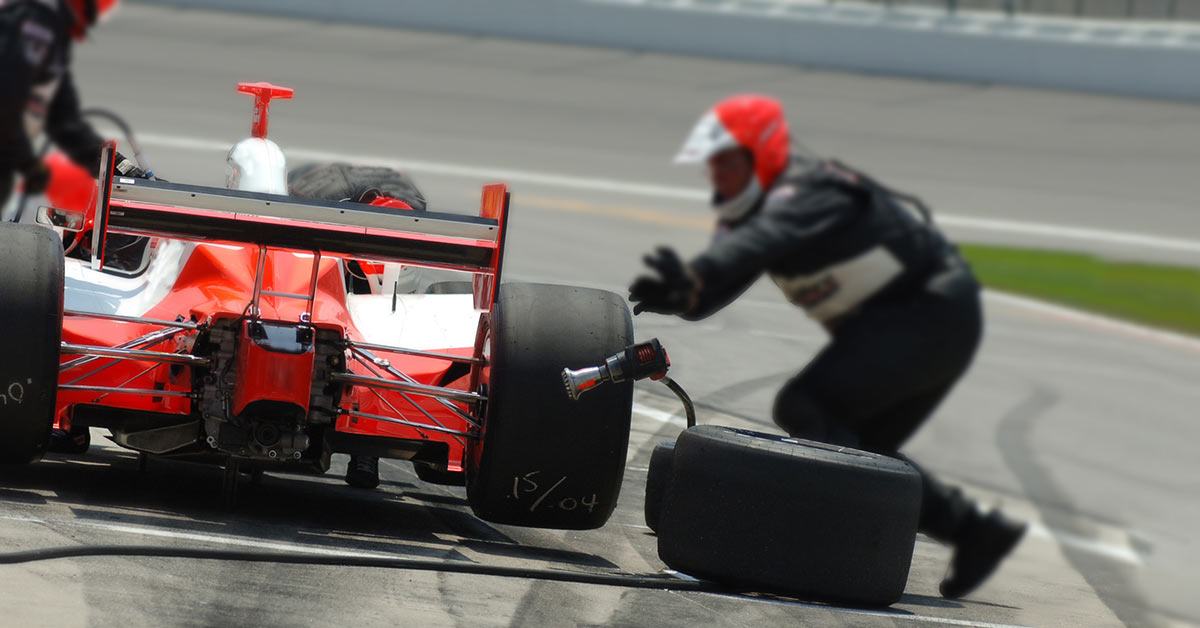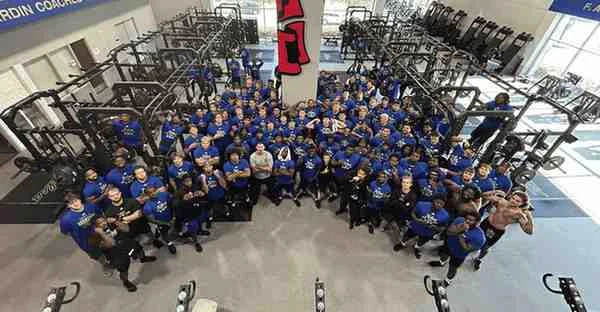[mashshare]
Ryan Horn has served with the Wake Forest basketball program since 2014-15, where he is the Demon Deacons’ Director of Athletic Performance. Horn previously worked under head coach Danny Manning at the University of Tulsa, where he helped the Golden Hurricane win the 2013-14 Conference USA regular season and tournament championships—the program’s first league title since 2003. Horn spent three seasons at Tulsa, most recently directing the athletic performance programs for men’s basketball and softball while also assisting with football. Before that, he worked with the Golden Hurricane women’s basketball and women’s soccer teams.
Freelap USA: How has your athlete screening process evolved over your time in coaching?
Ryan Horn: Our athlete screening process has evolved in a multitude of ways over the course of the past 10 years. We started asking more questions and scrutinizing everything we’ve done. Why are we testing/screening? Is a screen/test based on purpose or popularity? What is my skill set and scope of practice? What screens or tests do we want to use and why? How are we going to use the information we collect?
We are currently fortunate to have an experienced and dedicated staff that includes members from sports medicine, athletic training, physical therapy, sports psychology, and sports nutrition. The successful collaboration of our specific expertise and departments has been instrumental in the progression of our athlete screening process. We firmly believe in being aware of our specific skill sets and knowing when to refer certain protocols, testing, and concerns to each performance team member.
Early in my career, testing was an isolated, standardized, and sterile process. Each of us was a dragster, speeding down our lane with blinders on. Today, we believe assessment should be fully integrated, collaborative, and built into the very fabric of the training process.
Our role in the athlete screening process is as the pit crew, focused on performance-based testing, says @ryanhorn45. Share on XIn addition, it is important to note that basketball is a relatively small team. From a logistical standpoint, this means more time and resources can be dedicated to each athlete, which increases the quality of care we are able to provide. It is extremely important to our team that we maintain an assessment process that is fluid and involves frequent and meaningful conversations with our athletes and staff.
Each member of the performance team is responsible for taking the lead and screening each athlete in their specific area of expertise. When it comes to our role in the athlete screening process, we are the pit crew and focus on performance-based testing. This includes biomotor, bioenergetic, Sparta Force plate analysis (jump scan, upper/lower sway balance testing, landing), and velocity-based tracking/training.
Freelap USA: What is your approach to lower leg training in your athletes?
Ryan Horn: Our approach to lower leg training with our collegiate basketball players is multi-faceted. Areas of consideration include NCAA countable hours restrictions, injury history, structural limitations, training age, movement proficiency, time of year, and desired adaptation. We use multi-joint, single-joint, unilateral, bilateral, and multi-planar exercises. However, specific exercises should be viewed as a delivery system for stress that is reflective of athlete need, not our personal preferences. The loading parameters and regimens (eccentric, isometric, tempo-based exercises, etc.) vary to target specific physiological adaptations.
Specific exercises are a stress delivery system that reflects athlete needs, not our preferences, says @ryanhorn45. Share on XWhen building a training menu, we train what is trainable. This menu evolves as the athlete progresses. For example, if an athlete cannot perform a safety bar squat, we need to have movement check-downs (front squat with heels elevated, kBox belt squat, etc.) to safely and effectively load the athlete while we teach. There is an art to blending teaching with training. Ultimately, training should complement the sport, not compete with it. Our focus in the weight room is to be simple and surgical, not cute and sexy.
Freelap USA: What do your off-season plyometrics look like and what are you trying to get out of them?
Ryan Horn: We use a continuum-based approach that consists of extensive preparatory, intensive, and reactive elastic exercises. We utilize hops, jops, jumps, bounces, and bounds to target specific qualities and structural adaptations. Footwear, surface (sand dune, mat, grass, multi-purpose flooring, track, court), exercise selection, and implementation are all dependent on time of year, athlete need, speed, and training block emphasis. “Base Camp” is our first off-season block and follows 7-10 days of complete rest after our season finishes. This is an acclimation and anatomical adaptation block, where our focus is to solidify before we amplify.
We start our off-season plyometric program with lower leg and foot prep, which consists of extensive multi-jump batteries utilizing jump rope, double and single leg pogo series, rhythmic low box jumps, low hurdle hops, and skips while relentlessly reinforcing appropriate posture and landing mechanics. After “Base Camp,” our plyometric program is reflective of our speed (acceleration vs. max speed) and strength emphasis (eccentric, isometric, dynamic).
In these subsequent blocks, we move from single-response non-counter and counter-movement jumps, loaded jumps (barbell, trap bar), broad jumps, and hill/stair jumps to bounces/bounds with a reactive-elastic emphasis.
In the end, Ferraris burn tires, Priuses don’t. A big engine means nothing if the brakes (tendon, tissue, neuromuscular control), tires (foot/ankle complex), chassis (joint integrity), and transmission (anterior and posterior chain) can’t handle it.
Freelap USA: How does bar speed monitoring play a role in your yearly and year-to-year programs with your athletes?
Ryan Horn: We primarily use bar speed monitoring for auto-regulation and targeting of specific training qualities to individualize and optimize the training process. The particular lifts we tag velocities to include pressing and squat movements. We adhere to Bryan Mann’s recommendations and velocity bands to target specific qualities.
Tools like #VBT should complement, but not replace, effective coaching, says @ryanhorn45. Share on XIt is important to understand, however, that velocity-based training/tracking (VBT) is just a part of our ecosystem. It is something that is there, but we are mindful not to let it become a distraction to our athletes and coaches. Intent and execution should never take a backseat to chasing numbers on a screen. Tools like VBT should complement, but not replace, effective coaching. “Technology is a great servant, but a terrible master.”
Freelap USA: How have you found inertial training, such as the kBox, to impact your athletes, and what kind of things are you getting from inertial work? Specifically, how are you using it with a triphasic training model?
Ryan Horn: When we first acquired the kBox, there were only a handful of programs in the United States that were using inertial training devices. We could have viewed this as a curse, but it turned out to be a blessing in disguise because it gave us an opportunity to experiment and build our own battery of protocols. Fast-forward four years—now we view the kBox as one of our most versatile and trusted training weapons: You can use it effectively with both the Day 1 or Day 1000 athlete.
We view the #kBox as one of our most versatile and trusted training weapons, says @ryanhorn45. Share on XWe use the kBox for high force/high velocity, high force/low velocity, recovery protocols, total body, upper body, torso, unilateral, bilateral, axial, and non-axial loading exercises. Inertial training leads to improvements in eccentric rate of force development and the transference of forces (no leaks), which are critical to mitigating non-contact injury risk.
The triphasic block is heavily influenced by the work of Cal Dietz, Buddy Morris, and Tom Myslinski. We utilize Cal Dietz’s sequence of training (i.e., eccentric, isometric, dynamic/concentric emphasis) and Buddy Morris’ and Tom Myslinski’s loading parameters from their induction, destruction, and production protocol (elitefts.com, 2005). For example, when performing a bilateral kBox squat, our progression is as follows:
- Weeks 1-2 (eccentric emphasis): Hatfield squat with high resistance.
- Weeks 3-4 (isometric emphasis): Isometric squats with a coach holding the flywheel to pause the athlete at the bottom of each repetition.
- Weeks 5-6 (concentric emphasis): Lighter resistance and greater velocity utilizing dynamic repetitions.
[freelap-share]
[mashshare]





